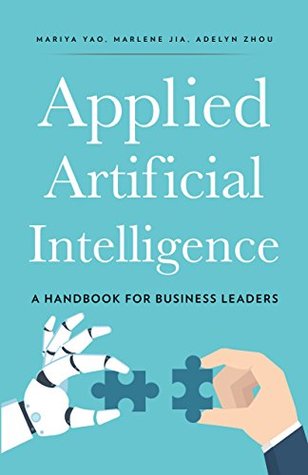More on this book
Community
Kindle Notes & Highlights
by
Mariya Yao
Read between
October 22 - October 28, 2018
Statistics is the discipline concerned with the collection, analysis, description, visualization, and drawing of inferences from data.
Descriptive statistics describes or visualizes the basic features of the data being studied.
Inferential statistics is used to draw conclusions that apply to more than just the data being studied.
Data mining is the automation of exploratory statistical analysis on large-scale databases,
The goal of data mining is to extract patterns and knowledge from large-scale datasets so that they can be reshaped into a more understandable structure for later analysis.
Machine learning enables computers to learn without being explicitly programmed.
Supervised learning occurs when the computer is given labeled training data, which consists of paired inputs and outputs (e.g. an image of a cat correctly labeled as “cat”), and learns general rules that can map new inputs to the correct output.
Unsupervised learning occurs when computers are given unstructured rather than labeled data, i.e. no input-output pairs, and asked to discover inherent structures and patterns that lie within the data. One common application of unsupervised learning is clustering, where input data is divided into different groups based on a measure of “similarity."
Reinforcement learning is learning by trial-and-error, in which a computer program is instructed to achieve a stated goal in a dynamic environment.
Deep learning is a subfield of machine learning that builds algorithms by using multi-layered artificial neural networks, which are mathematical structures loosely inspired by how biological neurons fire.
In practice, using simpler AI approaches like older, non-deep-learning machine learning techniques can produce faster and better results than fancy neural nets can. Rather than building custom deep learning solutions, many enterprises opt for Machine Learning as a Service (MLaaS) solutions from Google, Amazon, IBM, Microsoft, or leading AI startups.
Probabilistic programming enables us to create learning systems that make decisions in the face of uncertainty by making inferences from prior knowledge.
Probabilistic programs have been used successfully in applications such as medical imaging, machine perception, financial predictions, and econometric and atmospheric forecasting.
Most successful applications of machine learning to enterprise problems utilize ensemble approaches to produce results superior to any single model.
There are four broad categories of ensembling: bagging, boosting, stacking, and bucketing.
The lowest level of the Machine Intelligence Continuum (MIC) contains Systems That Act, which we define as rule-based automata.
Systems That Predict are systems that are capable of analyzing data and using it to produce probabilistic predictions.
While Systems That Learn also make predictions like statistical systems do, they require less hand-engineering and can learn to perform tasks without being explicitly programmed to do so. Machine learning and deep learning drive most of these systems, and they can function at human or better-than-human levels for many computational problems.
Recent breakthroughs in neural network models have inspired a resurgence of computational creativity, with computers now capable of producing original writing, imagery, music, industrial designs, and even AI software!(12)
machines will also need emotional intelligence to succeed in our society.
A System That Masters is an intelligent agent capable of constructing abstract concepts and strategic plans from sparse data. By creating modular, conceptual representations of the world around us, we are able to transfer knowledge from one domain to another, a key feature of general intelligence.


